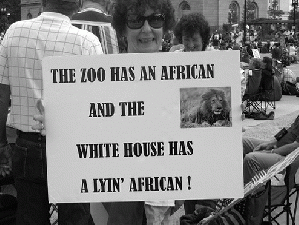From Selma to Ferguson to Baltimore, the Mutating Virus of Racism
The Rev. Martin Luther King, Jr., famously once said that a riot is the language of the unheard.
But riot is partly a misnomer to describe what happened in recent weeks on the streets of Baltimore following Freddie Gray's death in police custody. In fact, the rage on Baltimore's streets was essentially an uprising against the deep poverty that afflicts the city.
This is not hyperbole. Spoken in the language of rocks and flames and with all the fury to be expected from communities permanently consigned to society's margins, such violent street protests stand as a blunt rebuke of a socioeconomic system that has failed America's urban minority communities.
Post-Racial America?
Despite the bewilderment of CNN's Wolf Blitzer and other media observers that such violent protests could actually occur in an American city, nothing that's happened should come as a surprise. Many minority communities in the United States exist in a state of permanent economic depression. With its majority Black population, unemployment in Baltimore in 2013 among Black males in their early 20s was a staggering 37 percent. Nearly a quarter of the city's residents live below the poverty line, with median household income half that of white residents.
Is it really necessary to repeat all the dire statistics? Indeed, is it even necessary to ponder the irony that only a few years ago the media was heralding Barack Obama's 2008 presidential victory as the dawn of a new "post-racial" America? If anything, racism has been given a new lease on life since Obama's election. For starters, there's the irrational hatred of many white, right wing Americans for the decidedly moderate Obama's politics, a disdain fueled by a kind of visceral antipathy for the very notion of a Black person in the White House. But more than this the wave of recent anti-police brutality protests has provoked a backlash in certain quarters, revealing the oozing sludge of bigotry that in more quiescent times simmers just beneath the surface of some segments of "civilized" white society.
Social media is one barometer of this entrenched prejudice. Consider the YouTube video circulating in recent months claiming to show Ferguson, Missouri teenager Michael Brown engaged in an assault on another man. One link to this video (since removed) showed millions of viewers, titled "Michael Brown Criminally Assaults and Robs an Older Man," and begins by describing what follows as "What Al Sharpton and Jesse Jackson Don't Want You to See."
The video shows a stocky young Black man physically assaulting an older man outside an apartment complex. It's ugly to watch, as the older man can't do much to defend himself. Too bad the video is from 2012, was filmed in Woodland, Texas, and the real Michael Brown is nowhere to be seen, as the Christian Science Monitor reports. This is only one of many slanders against Michael Brown that have gone viral in social media.
What's telling about this is not so much the gullibility of those who take cheap slanders as good coin, but the fact that so many people apparently want to believe the lie. Why? Indeed, why would people who did not personally know Michael Brown or his family, whose entire knowledge of his shooting by a Ferguson police officer comes from news and social media, be so quick to believe this young man was a law-breaker who basically got what he deserved?
Some will say video footage taken shortly before Brown was killed that showed him stealing a box of cigarillos from a convenience store, pushing away a store employee who approached him, is evidence he was just another street thug who really did get what he deserved. In fact, no criminal incident at the convenience store was ever clearly established or proven, nor was Brown's friend with him in the store that day ever charged with or as an accomplice to a crime. What is established is the racial context of the many efforts to disparage Brown. Certainly as widespread as petty shoplifting is, the middle class white man or woman who pilfers items from Macy's or Nordstrom's or The Dollar Store is generally not labeled a "thug," called an "animal" or otherwise considered fit to die.
These days not too many white, middle-class suburbanites will openly complain about a Black person attending their local church or school. Nor are they inclined to defend the legacy of slavery or Jim Crow segregation. Instead of screaming, hate-filled white faces confronting the Selma marchers of 1965, we now encounter those who blithely counterpose "All Lives Matter" to the protest banner, "Black Lives Matter," as if even acknowledging the special persecution of the Black community constitutes some sort of special privilege unfair to whites.
This is the pathology of white racism, clueless to the end and teaching universal suspicion of minorities. The racial distrust runs so deep that often even success in life cannot overcome it. That's what actor Rob Brown, who co-starred with Sean Connery in the film Finding Forrester and is featured in the HBO series "Treme," discovered in 2013 when he purchased a $1,300 watch at Macy's in New York City. Brown was arrested and searched by undercover cops who didn't believe "someone like him" could afford such a purchase.
(Note: You can view every article as one long page if you sign up as an Advocate Member, or higher).





